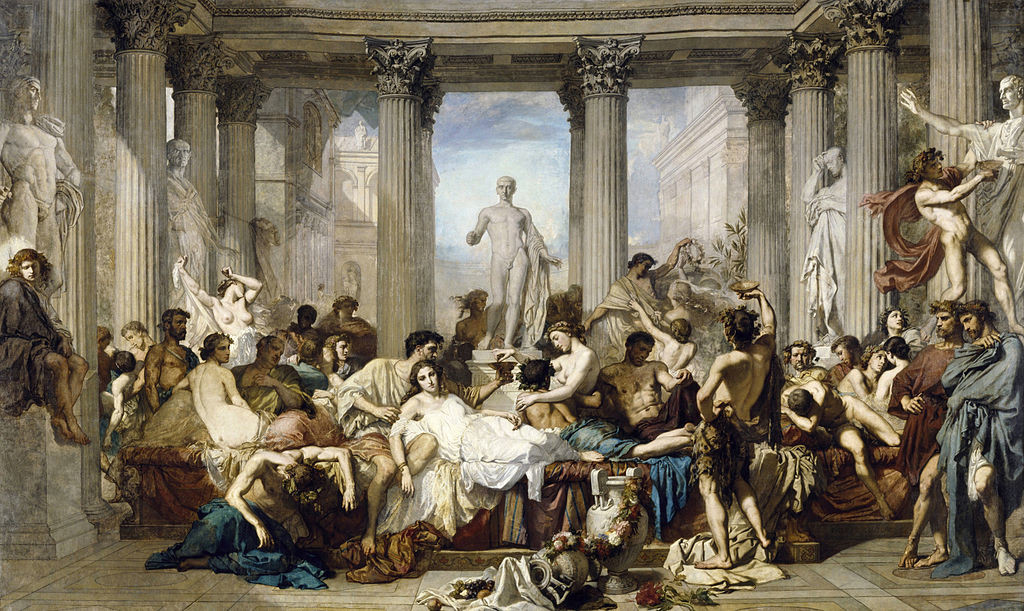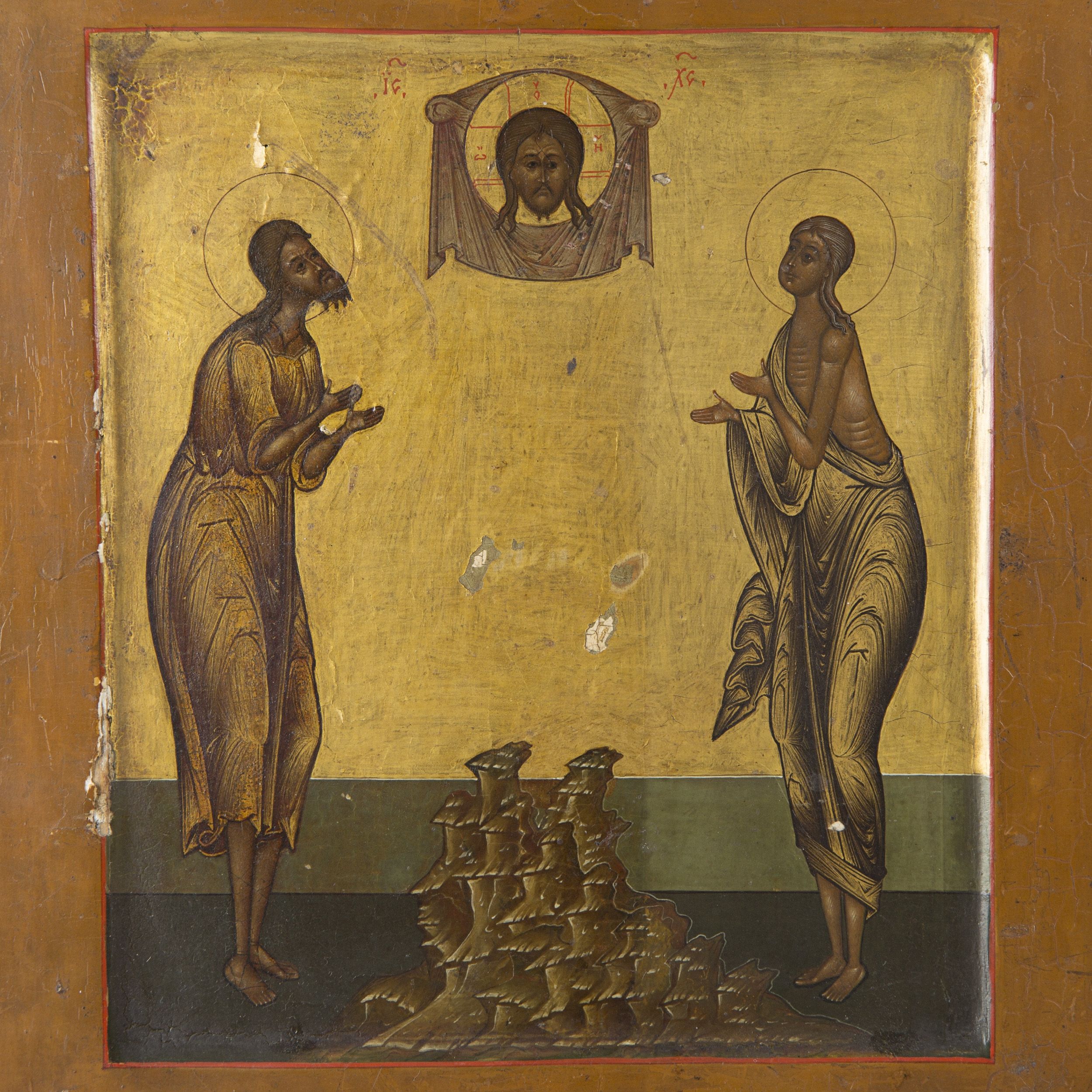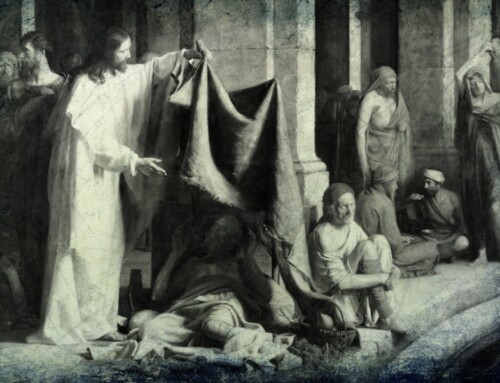
St. Alexius of Rome lived from about 410-460 AD; this period was at the heart of cultural, social, and political collapse in the already waning Roman Empire; during this period, as a whole, Rome was obsessed with issues of identity and transgenderism; for the most part, the Imperial courts, typified by the arrogant and decadent Honorius, had been taken over by a cadre of royal eunuchs who served as the Emperor’s closest advisers: often controlling the court schedule and ruthlessly manipulating access to the throne; at the same time, influenced heavily by the growing cultural authority of the Eastern Empire, centered in Byzantium, the more masculine persona and image of the Western Emperor had been replaced by a rather languid and gender fluid iconography – symbolized by the trading-in of the manly crown of laurel leaves for a golden jewel-encrusted diadem and the replacement of the bleached bone-white toga with the heavy florid embroidered silks of the Orient.
Politically, beginning strongly with the Severan Dynasty, the Empire also witnessed the arising power of female power-brokers within the Imperial families; typified by the wickedly facilitating women around the transgender Emperor Elagabalus; subsequently, free to explore his degeneracy: the boy-king attempted to coerce Roman doctors into performing his sex-change surgery. As an aside, in the official portraiture of this period, the Imperial matriarchs are often portrayed as if they were men wearing wigs; almost any and all homage to the feminine is missing. In the late-Empire, when assertive men of masculine quality rose to leadership, like General Stilicho, they were often cut down as a threat to the broken, but still lucrative bureaucratic order.

It was in the midst of this cultural milieu of imminent collapse that God raised up St. Alexius: born into a wealthy noble family; when Alexius came of age, his parents arranged a marriage for their son to a member of the Imperial family. A young man of deep religious fervor and conviction, Alexius desired to remain chaste and single, yet, he initially submitted to the wishes of his parents. Although Alexius went through with the marriage, immediately after the ceremony, he fled Rome, and the court intrigue that was about to swallow him, and headed for the distant city of Edessa in Syria; not coincidentally, Syria was the home province of the horribly corrupt and decadent Severan Dynasty which almost brought down the Empire with the transsexual Elagabalus. In Syria, Alexius completely renounced his identity, becoming a sort of mendicant anchorite at a local church; Alexius, in certain respects, fits into the Eastern Orthodox tradition of the “holy fool.” This type of spirituality, though less witnessed in the West, however was rather perfectly realized in St. Francis of Assisi and St. Benedict Joseph Labre, where the contrite soul mercilessly battled sin through the renunciation of pride; often, appearing mentally incapacitated thus bringing upon themselves the ridicule of others.
The Alexius story interacts with the Fall of the Western Empire, when he ended up back in Rome: after Alexius gained notoriety and fame in Syria as a reputed “Man of God,” he fled the province and unintentionally returned to Rome when his ship was wrecked; looking like a lowly and sick beggar, Alexius is taken in by his own father who never recognizes him. Alexius spends the next seventeen years living under an outdoor stairway in his family home; not until after his death, and a scroll on which Alexius had written about his life is finally discovered, do his parents learn the truth about their son’s disappearance.
In post-Cold War America, there is a near neurotic preoccupation with homosexuality, bisexuality, and transgenderism; like in Rome, this fixation reveals a general lack of confidence in existing social, cultural, and political structures; this disintegration in faith is no more fully evidenced than in the breakdown of the family; out of these often dysfunctional and abusive homes, often headed by overburdened and preoccupied divorced or single women, lost children emerge who desperately seek a sense of belonging and security within ever narrower cults of identity; I discovered this rather immediately in early-Clinton era San Francisco where curiously smaller “gay” male subsects were further divided by a dizzyingly varied and complex array of sexual classifications between those who were aggressive or dominant, muscular or thin, young or old, manly or feminine, blond or brunette; as Alice in Wonderland, who shrunk down in order to fit through a series of littler and littler doors, self-worth and identity often merged around such specific physical traits as the size of one’s penis or the shape of your buttock; sadly, in that, through a narrower and more slight hold on identity – did the confused and distraught find their self-worth.
Recently, this all-encompassing need for affirmation has further degenerated into an irrational form of self-identification that usually has nothing to do with visible physical attributes, or even variations of personality, but are actually confirmed by the individual’s own perception of themselves. This has resulted in a myriad of accepted albeit complicated inner constructs of the psyche; for instance, such confusing amalgamations as a pre-op male transgender (male to female) who is also a lesbian are now possible; the most famous current example of this type is Bruce Jenner. Manifested within this context is a certain anxiety and peevish fastidiousness about the use of the pronoun he or she, morphing into a sort of widespread hysteria concerning the use of public restrooms.
This general angst in society is entirely reminiscent of late-Imperial Rome and their near incapacitating fixation with the intricacies of court ritual and etiquette – all controlled by the ever-present and scheming eunuchs. The preoccupations within the overblown bureaucracy of the Emperor mirror the American slide into mass narcissism that, like the Romans, ignores the growing threats amassing right outside the palace walls. Contemporary historian Salvian described the effeminacy of the late-Empire under Honorius:
“Men took the garb of women and made their steps more mincing than women do; they wrought for themselves the tokens of a monstrous impurity and swathed their heads with the wrappings of feminine veils.”
At the highest levels of society, genuine masculinity was sublimated in favor of fawning courtiers; in late-phase America, the Obama administration has been a hotbed of weak men who mastered the art of bureaucratic maneuverings embodied in the tiny and high-pitched Timothy Geithner; the terminally whiny Jay Carney; and in the underhanded maneuverings of the conspicuously short Rahm Emanuel and Ben Rhodes; into that mix were the often naked grabs for power by calculating women: the irksome Kathleen Sebelius who helped engineer the backroom takeover of healthcare and most conspicuously the scandal plagued Hillary Clinton who notably continues to duel-connive with her court favorite Huma Abedin – a woman still inexplicably married to disgraced sex-selfie former Congressman Anthony Weiner.
It’s significant, that within the persona of Hillary Clinton is almost perfectly embodied the same sort of gruesome enabling which took place behind the scenes in Rome: where every perverse whim of those in power created a sort of impermeable shield energized by the constant court machinations of the sycophants most interested in maintaining the corrupt status-quo; even deeper – is a layer of sadistic decadence that seems to thrive in the paranoia that drove Clinton’s preoccupation with secrecy; this thick aura of protectionism radiates from Clinton and, as a consequence, attracts others with similar bents, for example, the conspiracy-minded Sidney Blumenthal. Because of this, in her latest incarnation, Clinton lacks both a feminine character, as well as a masculine one, but is solely fluid in that her ever shifting strategies determine her identity. Unlike Margaret Thatcher, or even Golda Meir, who could be incredibly resolute, even brutish, Clinton continually fluctuates and cannot maintain a singularly feminine core; here, she reimagines Evita Person – who, at some point ceased to be a woman, but instead became a thing; a symbol; and, to some – an icon. Accordingly, Madonna, who almost single-handedly legitimized late-20th Century gender dysphoria, was the ideal living transformer to play Evita in the film version.
Similar to the endless intrigue around Honorius, with Obama: even men who exhibited the slightest amount of a moderate masculine character, for example Michael T. Flynn, Robert Gates, or Leon Panetta, were quickly marginalized and later pitched. Part and parcel with the weakness of American political structures and figures is the coinciding pathological unwillingness on the part of liberals to address the growing threat of Islamic terrorism – in particular the odd silence of American feminism; in fact, because the American male has been so fully neutered, liberalism has fetishized, and secretly worships, the violent, caricatured, and ugly form of gross masculinity that has taken shape in Islam.
In pop-culture, this swerve towards eroticizing the extremes of male violence is perfectly manifested with the massive popularity, among upper-middle class career women, of the vicious sex drama “50 Shades of Grey;” creating a strange intersection between liberalism, third-wave feminism, and the veneration of cruelty. At the same time, with the rise of transgenderism, there is an increasingly radical separation of the male persona into two divergent camps that has interestingly been taking place in “gay” culture since its inception in the late-1960s; for example, Dr. Howard Brown, one of the original founders of the instrumental and revolutionary National Gay Task Force, described the Stonewall rioters as: “limp-wristed, shabby or gaudy gays that send a shiver of dread down the spines of homosexuals who hope to pass as straight.”
Continuing today, gay culture is remarkable – not for its harmony, but for its tendency towards contradictory extremism: where there is a constant battle between top and bottom, dominant and submissive, bear vs twink; all are glaring perversions of the biological sex roles: at one edge is the creation of a hyper-masculine idol (personified in the leather cult) and at the other, the “gay male morphs into the near feminine represented by the desire to be penetrated.
This broad displacement of masculinity in America, first by the sensitive and confused baby-boomer, I am thinking of Dustin Hoffman in “The Graduate,” then by the high-heeled disco lothario, later by the quintessential “in-touch with my feminine side” yuppie, next by the metrosexual, and finally with the “gay” male, this lessening and reconditioning of the male, that has bordered on male-to-female hormonal therapy, has encouraged, among other things, the peculiar emergence of militantly proud and cloying moms with a “gay” son: prompting recently divorced pop-singer Gwen Stefani to state: “I would be blessed with a gay son;” And, as Kurt Cobain prophetically sang in Nirvana’s 1993 hit “No Apologies,” truly, in the America of the early-21 Century: “Everyone is gay…” Subsequently, the role of men in society has been almost completely lost. The inability for men to comprehend the role of masculinity in their own lives, let alone in the culture, has created the millennial distrust of marriage in favor of “friends with benefits” along with the “failure to launch” phenomena among young middle-class males; in its wake are the lost children of easy divorce, single motherhood, and absent often unknown fathers.
Consequently, especially boys, having never witnessed fatherhood or any other masculine role model, the ungrounded form into cult-like groups of identity group-think. They are generally restless and twitchy; having never grown up under the secure presence of a male protector. This situation has bred the curious appearance of hyperactivity and the over-prescription of Ritalin. While natural early masculine play in boys is pathologized, there has been the concurrent semi-disturbing upswing of pink “princess” culture – massively marketed by Disney; this is a sign, that as gender roles are becoming more confused and fluid – some have retreated into the extremes of mirror-gazing: epitomized by Kim Kardashian and her constant need to selfie; Kardashian, at times, with the overemphasis on her curves and prodigious rump, appears as a female impersonator or a woman trying to be the caricatured embodiment of femininity imagined by the drag queen.
And, here, “gay” culture and current American tastes have merged – wherein, homosexual men can only relate to women, besides their mothers, when they become satire; hence the “gay” male fixation on drag which has gone beyond the early-man-in-a-dress look perfected by the late comic Divine to the “women” of RuPaul’s Drag-Race who could conceivably pass for biological females. The corollary in the straight world is the proliferation of Viagra, even for seemingly virile young men, who are unable to get aroused, when confronted by an actual woman, after being raised on a daily dose of pornography and the internet fantasy world of silicone inflated breasts and bottoms; this cyber-madness directly led to the immense popularity of MILF porn among heterosexual males, who, like Anthony Perkins in “Psycho,” are rejecting women and unwillingly running back to the mother: in the film this was symbolized by the savage butchery of Janet Leigh’s character. But, like the mummified corpse of Mrs. Bates, gender has entered the imagination and solely exists as a sort of phantasm by which we can dress-up and become whoever we want.

Eventually, this madness will turn against itself and began to devour the culture that facilitated its rise; in America, this is currently witnessed in the hysteria over bathroom use and the denial of sex differences even on the most basic biological level – with the near full scale acceptance that gender is merely a product of social construction – this is a radical return to Rome where pomp and pretense could materialize reality. Yet, like in Rome – the illusion of the self, distracted everyone away from the nearness of catastrophe; cultural decline is always intoxicatingly glamorous; exemplified by the masterwork “Romans During the Decadence” by Thomas Couture, a painting created during the chaos of post-Napoleon France – from which the country never recovered, nor returned as a world power; and the stultifying beauty of Sophia Loren in the megalithic film “Fall of the Roman Empire,” released just as America entered the turbulent and decisive period of the mid-to-late-1960s. This sort of revelry in the middle of cultural decay is tragically reenacted each year, especially during the increasingly florid and vulgar Halftime Shows, at the pompously named Super Bowl.
Underneath the over-preoccupation with the intricate nuances of sexuality and gender is an overall malaise resulting in a devastating failure of certainty in the validity of Western Civilization. Meanwhile, the teetering and bloated bureaucracy, many boastfully thinking it’s “too big to fail,” has ever encroached into the everyday – consuming once private and personal domains of child-rearing, healthcare, and, now – even the biological functions of elimination. This claustrophobic condition has generated panic: not only in the former children of dysfunctional and obliterated families, but in the offspring of hyper-involved overbooked soccer moms (constantly filling-in for missing or broken-down dads) who were menacingly present, but emotionally unavailable. Sensing the return of the oppressive mother, or the further rejection of the unloving father, especially millennials – have turned on themselves; pursuing the imaginary perfection of the male in homosexuality – while becoming infected with HIV at astronomical rates and ushering in a new era of antibiotic resistant gonorrhea and the reemergence of syphilis; or, they completely abandon their sex, often because it reminds them of the parent they hate, causing the uncontrollable spectacle of transgenderism.
The only feasible solution to this cascading problem is the example of St. Alexius: who exemplified a methodical bearing of the soul; a stripping away of the exaggerated emotionalism found in current flawed cultural and social expectations; leaving the penitent completely naked, and, like St. Francis – a decisive casting off that reveals the true self; in both of these cases: a “Man of God.” It’s a fundamental return to the transcendent and the genetic whereby silks and robes (the father of St. Francis was a wealthy cloth merchant) and every trapping of modern society is abandoned – with only the man, or woman, remaining; as St. John of the Cross repeatedly wrote – this entails a complete “annihilation” of our attachment to personal understanding, feelings, opinions, desires, and notions of the created self; where, at least in America, identity has become associated with a narcissistic and inflated belief in the domination of self-esteem that is repeatedly inflated through a kind of psychological masturbation. For this reason, homosexuality is always based, not on some hidden birthright that is only decisively perceivable by the carrier, but entirely hinged upon the act of self-expression through the articulation process of “coming out.”
Because of the nakedness adopted by certain aesthetics and Saints, like Alexis, their relationship to the eternal and to Christ is almost always expressed through the body: through their physical suffering, in Alexis – through his actual bearing of the partially uncovered body as the once noble man prefers rags to ornamentation, and, as in St. Francis – through blood, bleeding and the stigmata; unlike the current obsession with labels and lexicon – their orientation is wholly nonverbal. Whereas gender confusion is a layering of mounting personas (gay-top-straight acting-bear-into guys with bubble-butts), and transgenderism is a literal caking-on of qualitative masks, expertly lampooned by the massive industrial strength jars of cosmetics used by the men in “The Adventures of Priscilla, Queen of the Desert,” true identity is a liberating reduction to the essentials.
The most likely scenario to the current crises is a near total collapse of Western Civilization: hence, a radical return to sex differences namely when banks, gas stations, and grocery stores become indefinitely or permanently closed: males will have to hunt, farm, and fight – while the biological imperative of birth, in a world without abortion or readily available pharmaceuticals, will leave women huddled about the fire. This is precisely what happened after the Fall of Rome which ushered in the long period of the “Dark Ages.” But, in the midst of social fragmentation throughout the West, where court intrigue was replaced by survival – the genders were naturally reasserted and culture began to coalesce around the biological sexual norms: most apparent among men with the rise of the chivalric and religious knightly orders – visibly accomplished in the Knights Hospitaller. For, in the end – this current myopia: the obsession with gender, homosexuality, transgenderism – is a pretense that has no material basis except for what resides in the mind; eventually – it will all fade into the nothingness that it is; “For all that is in the world, the lust of the flesh and the lust of the eyes and the boastful pride of life, is not from the Father, but is from the world. The world is passing away, and also its lusts; but the one who does the will of God lives forever.” (1 John 2: 16-7)






Thank you for the article. I realize the rhetorical color that is needed here, but I still think that your sentence “almost any and all homage to the feminine is missing in the late-Empire” is a sweeping generalization that does not improve the essay. There is an extraordinarily beautiful and feminine portrait of Alexander Severus’s Wife Salustia Orbiana. Certainly more girlish than womanly, but one has to remember that she must have been extremely young when the portrait was taken. Julia Domna herself was a beautiful woman as the better portraits of her attest. The hyper masculinity of Caracalla, I imagine, is the flip side of a prevailing effeminacy (we see the exact same thing today), I think you are correct about this tendency but again I think your essay is to sweeping in its generalizations.The situation may have been as you describe but I believe it was more mixed for instance the hyper masculinity of Caracalla might have had nothing to do with sexual identity and everything to do with defense against barbarians.
Strictly speaking the Severans were Africans as you certainly know, so it is a little confusing to say that their home base was in Syria even though no doubt you are correct in saying that since Giulia Domna was a Syrian (the very fact that you say there home base was Syria shows the immense power of Giulia Domna). Finally I want to remind you that hyper civilization produced also beautiful flowers. Plotinus for instance and Evylin Waugh. The portrait of Cornelia Salonina the wife of the Emperor Gallienus is somewhat un-feminine but the reason for this is that it is a psychological portrait. She was a friend of Plotinus… Well thank you again this is obviously more of a letter than a comment on your essay.
You are correct – the whole essay is a massive generalization, but I try to keep these blogs as short as possible – though I usually fail in that. My main point about the portraiture was that, at least in some cases, they mirrored the ugly sort of machinations that took part on the female side of the Severan Dynasty: I am thinking about the scheming which put the degenerate Elagabalus on the throne (claiming he was the illegitimate son of Caracalla) and then the same nasty backroom deals that did away with Elagabalus and then replaced him with the spoiled Alexander Severus, who, the Severan women, at first, again, tried to control and facilitate, only to create a megalomaniac that went out-of-control; it’s my opinion, that this persona fits someone like Hillary Clinton as opposed to a Margret Thatcher, who rose without a male avatar. This is also telling, that within these double-dealings, so inherent with the Clintons, is this ever-present aura of sexual decadence. At the close of the Clinton-era, you could see Hillary beginning to melt-down (I sense that same sort of depressive angst in the female Severan portraiture) as Bill became more and more a reckless (Roman Imperial) adolescent – running about the White House (palace) with Monica Lewinsky like the teenage Severan emperors – in the end, it just all collapsed.
Thank you for this stunning comparison of modern America to the decline of Rome. Generalizations acknowledged, I think you’re spot on. I’ll be recommending this article to whoever will listen.
I think you absolutely nailed it. Thank you so much for your insights and analyses. I have to say that I think this is probably the best post you’ve written so far. Please keep delving into transgenderism and how we can deal with it when friends or family support it, or we encounter people who self-identify that way. I am learning a lot from your blog. God bless you!
This is one of the best observations I have seen on our failing western culture, not to mention the accurate comparison to the fall of the Roman Empire. Keep up the good work!
Jospeh – I just recently discovered your writings and podcasts and am so very grateful for your honesty and astuteness. As a Catholic and recovering feminist, I am desperate for some explanation for the rise in the culture of transgenderism, homosexuality and its acceptance. It’s mystifying, until I come across such clear-headed writing as this. It’s part of something much bigger culturally and it definitely has its roots in disordered spirituality (the demonic). My latest theory is that there’s a deliberate biological dimsnsion to the disappearance of the masculine i.e. The number of male babies born had been dropping for years. If the men and the masculine are what explore, foster and establish strong societies, and if there are those who decidedly do not want strong societies (is liberal democracies), then the proliferation of estrogenizing plastics, herbicides (glyphosate/Roundup weed Miller), pesticides and other feminzing things bombarding the human body from all sides would be a brilliant way to neutralize and castrate maleness in our society, wouldn’t it?
Your essay shed so much light and I will continue to follow you. Thank you again for telling the truth.